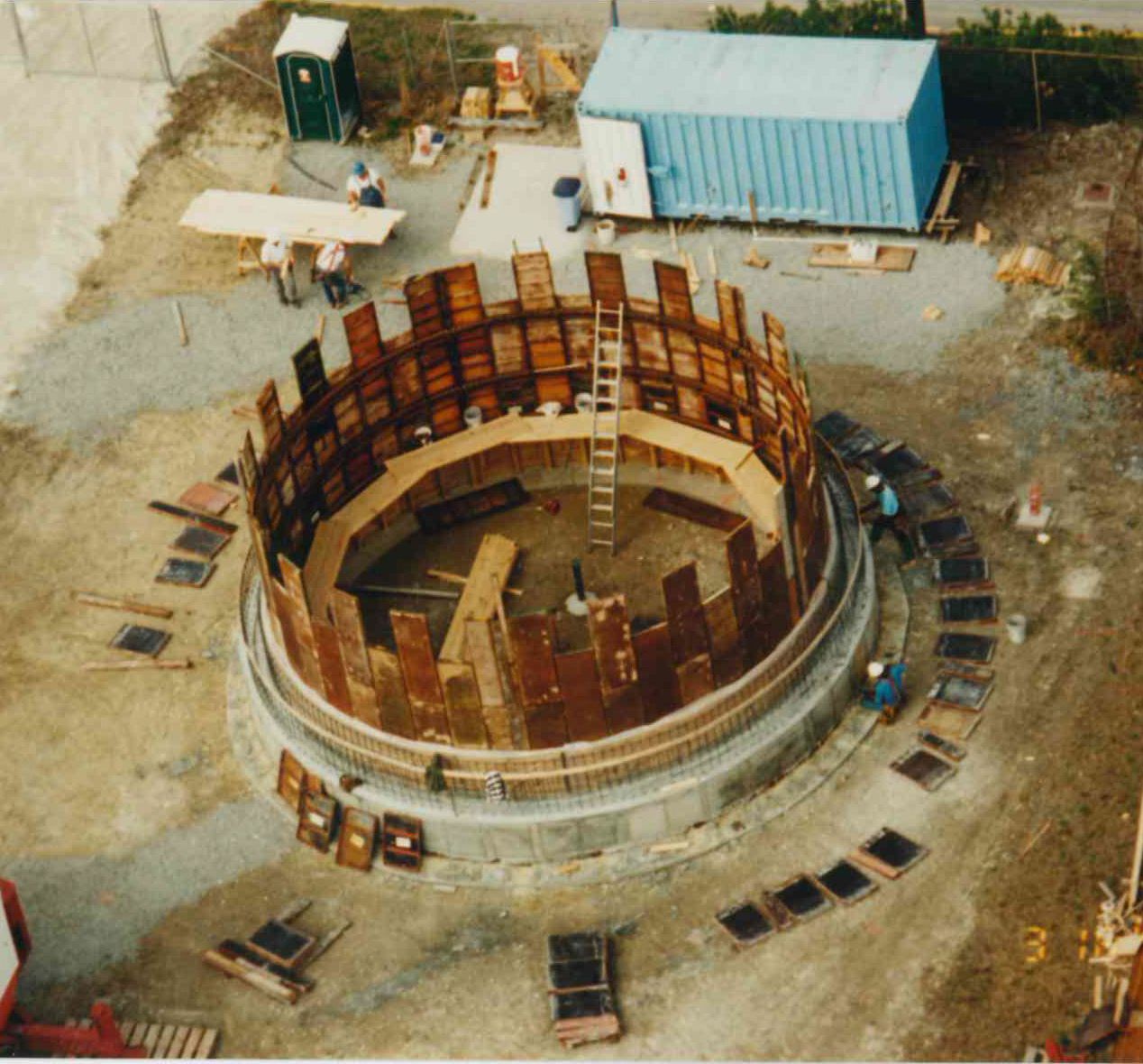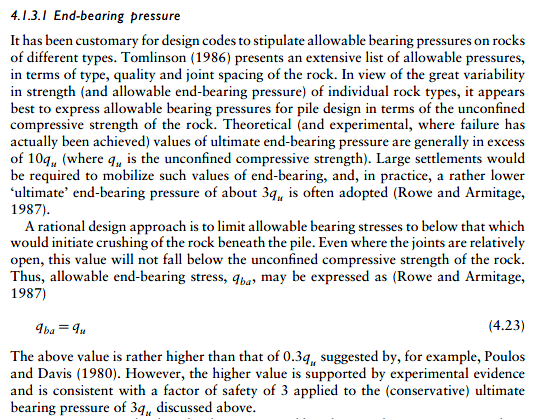Hi all,
I'm designing a circular secant pile shaft. Some project info: Med-dense sand with silts, 115pcf, 33deg, 48' dia, 64' depth of excav, 4' dia piles. Some ring steel will be added to compensate for tolerances, but overall the walls are considered structurally competent to resist lateral loads by themselves. 12' pile embedment below bot of excav.
After the shaft is constructed, a few of the piles will see a significant axial load. For simplicity, I can assume that only the piles receiving direct contact with the load bear it down to rock. But will not some of this load also be transferred via pile-to-pile friction to the remaining shaft bearing surfaces on rock? I suppose that will only be the case to the degree that the contact piles settle... Is it legitimate to try to increase the effect bearing area with this logic, and if so, exactly how? Is there a reference I could look into?
I'm dealing with this because I was given no bearing capacity value for piles on rock, I just have skin friction allowables. We're assuming 10ksf for end bearing. Even though that seems overly conservative to me, we haven't needed the extra capacity until now. Now that this load is going to be acting on the piles, I might want to count on more bearing capacity in order to prevent an increase in embedment. So either I can say we actually have a larger allowable pressure than 10ksf, or I can say I actually have more bearing surface resisting this load.
I'm designing a circular secant pile shaft. Some project info: Med-dense sand with silts, 115pcf, 33deg, 48' dia, 64' depth of excav, 4' dia piles. Some ring steel will be added to compensate for tolerances, but overall the walls are considered structurally competent to resist lateral loads by themselves. 12' pile embedment below bot of excav.
After the shaft is constructed, a few of the piles will see a significant axial load. For simplicity, I can assume that only the piles receiving direct contact with the load bear it down to rock. But will not some of this load also be transferred via pile-to-pile friction to the remaining shaft bearing surfaces on rock? I suppose that will only be the case to the degree that the contact piles settle... Is it legitimate to try to increase the effect bearing area with this logic, and if so, exactly how? Is there a reference I could look into?
I'm dealing with this because I was given no bearing capacity value for piles on rock, I just have skin friction allowables. We're assuming 10ksf for end bearing. Even though that seems overly conservative to me, we haven't needed the extra capacity until now. Now that this load is going to be acting on the piles, I might want to count on more bearing capacity in order to prevent an increase in embedment. So either I can say we actually have a larger allowable pressure than 10ksf, or I can say I actually have more bearing surface resisting this load.


![[idea] [idea] [idea]](/data/assets/smilies/idea.gif)
